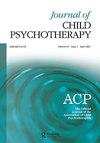Research digest: Therapeutic work with children and adolescents who have experienced trauma
IF 0.8
Q4 PSYCHOLOGY, CLINICAL
引用次数: 0
Abstract
One is conscious when approaching this area of research what a mammoth task lies ahead. Trauma is a complex and much debated field, both theoretically and clinically, and as the range of papers in this special issue demonstrates, can be approached and thought about from many different angles. As established in one of the abstracts included in this review (Norman et al., 2012), all forms of child maltreatment can have serious and significant impacts on several health indices, making the development of effective treatments all the more important. There is a plethora of research examining the treatment of trauma within youth psychotherapy, with the majority of it centring around trauma-focused cognitive behavioural therapy (TF-CBT). This approach, developed in the 1990s, is a shortterm intervention involving individual, parent, and family work, and focuses on the learning of cognitive strategies to manage negative emotions and beliefs stemming from highly distressing and/or abusive experiences. Meta-analysis (Morinaab et al., 2016) and systematic review (Carey & McMillen, 2012) have established the ‘high quality’ evidence for TF-CBT that subsequently has the most influence on public policy. However, eye-movement desensitization and reprocessing (EMDR) is also emerging as an alternative treatment with a good evidence base (Moreno-Alcázar et al., 2017). Currently, The National Institute for Health and Care Excellence (NICE) recommends both these treatments for children and adolescents who have experienced trauma. To a lay observer of the field, decisions surrounding choice of intervention could easily appear quite straightforward. There is high quality evidence for short-term manualised treatments, which are well suited to delivery within a public health setting. However, these treatments rely on a level of functioning that does not exist in all children and families that have experienced trauma, and fail to address the multiple and insidious ways complex trauma can imbed within the psyche, as discussed in many of the papers in this special issue. The complexity and ‘livedexperience’ of engaging in therapy focused on treating trauma symptoms are addressed by some of the research abstracts included below. Eastwood et al. (2021) and Graham & Johnson (2021) seem to broadly highlight the importance of a relational and individual approach, while Tiwaria et al. (2021) echo this with a call for ‘client-centred, eclectic approaches.’ Psychodynamic psychotherapy has been widely used with children who have experienced maltreatment, especially those who have been placed in foster care or have been adopted. Some of these studies have been included in this review, amongst them a randomised controlled trial looking at the effectiveness of individual child psychotherapy for girls who were JOURNAL OF CHILD PSYCHOTHERAPY 2021, VOL. 47, NO. 3, 499–512 https://doi.org/10.1080/0075417X.2021.2013928研究文摘:有创伤经历的儿童和青少年的治疗工作
在研究这一领域时,人们会意识到前方是一项艰巨的任务。创伤是一个复杂且备受争议的领域,无论是在理论上还是在临床上,正如本期特刊中的一系列论文所表明的那样,可以从许多不同的角度来看待和思考。正如本综述中的一篇摘要所述(Norman等人,2012年),所有形式的虐待儿童都会对几个健康指标产生严重和重大的影响,因此开发有效的治疗方法变得更加重要。在青少年心理治疗中,有大量研究对创伤的治疗进行了研究,其中大多数都集中在以创伤为中心的认知行为疗法(TF-CBT)上。这种方法发展于20世纪90年代,是一种涉及个人、父母和家庭工作的短期干预措施,侧重于学习认知策略,以管理因高度痛苦和/或虐待经历而产生的负面情绪和信念。荟萃分析(Morinaab et al.,2016)和系统综述(Carey&McMillen,2012)为TF-CBT建立了“高质量”证据,随后对公共政策产生了最大影响。然而,眼动脱敏和再处理(EMDR)也正在成为一种具有良好证据基础的替代治疗方法(Moreno-Alcázar等人,2017)。目前,美国国家健康与护理卓越研究所(NICE)建议对经历过创伤的儿童和青少年进行这两种治疗。对于该领域的外行观察者来说,围绕干预选择的决定可能很容易显得相当简单。有高质量的证据表明短期人工治疗非常适合在公共卫生环境中进行。然而,正如本期特刊中的许多论文所讨论的那样,这些治疗依赖于并非所有经历过创伤的儿童和家庭都存在的功能水平,并且未能解决复杂创伤可能嵌入心理的多种潜在方式。下面的一些研究摘要阐述了专注于治疗创伤症状的治疗的复杂性和“生活经验”。Eastwood等人(2021)和Graham&Johnson(2021)似乎广泛强调了关系和个人方法的重要性,而Tiwaria等人(2021年)则呼吁“以客户为中心,兼收并蓄的方法”心理动力学心理治疗已广泛用于遭受虐待的儿童,尤其是那些被寄养或被收养的儿童。其中一些研究已被纳入本综述,其中包括一项随机对照试验,研究个体儿童心理治疗对女孩的有效性,该试验发表在《儿童心理治疗杂志2021》第47卷第3期,499-512https://doi.org/10.1080/0075417X.2021.2013928
本文章由计算机程序翻译,如有差异,请以英文原文为准。
求助全文
约1分钟内获得全文
求助全文
来源期刊

JOURNAL OF CHILD PSYCHOTHERAPY
PSYCHOLOGY, CLINICAL-
CiteScore
0.70
自引率
50.00%
发文量
46
期刊介绍:
The Journal of Child Psychotherapy is the official journal of the Association of Child Psychotherapists, first published in 1963. It is an essential publication for all those with an interest in the theory and practice of psychoanalytic psychotherapy and work with infants, children, adolescents and their parents where there are emotional and psychological problems. The journal also deals with the applications of such theory and practice in other settings or fields The Journal is concerned with a wide spectrum of emotional and behavioural disorders. These range from the more severe conditions of autism, anorexia, depression and the traumas of emotional, physical and sexual abuse to problems such as bed wetting and soiling, eating difficulties and sleep disturbance.
 求助内容:
求助内容: 应助结果提醒方式:
应助结果提醒方式:


